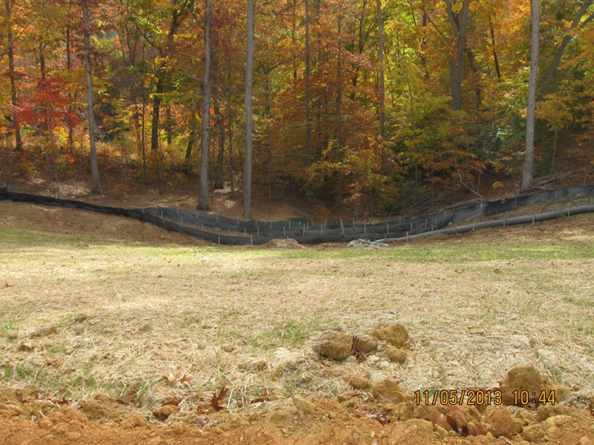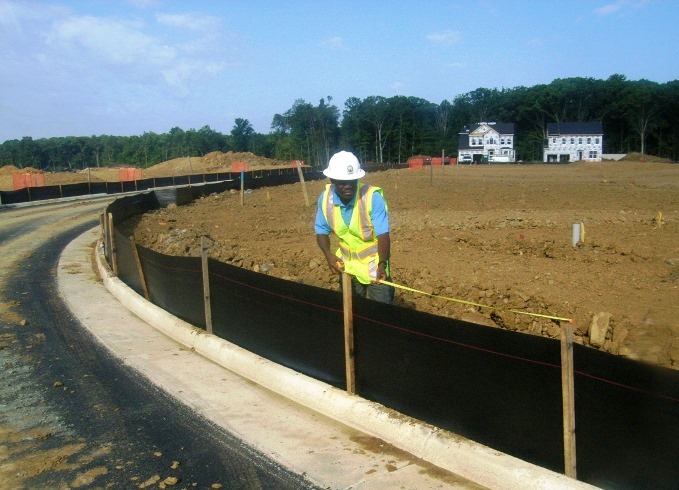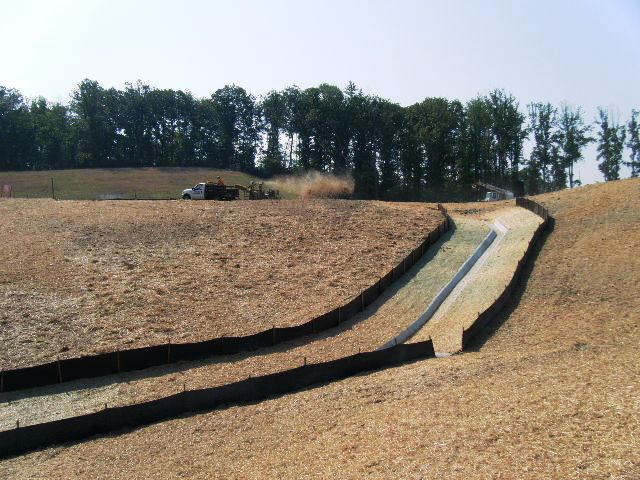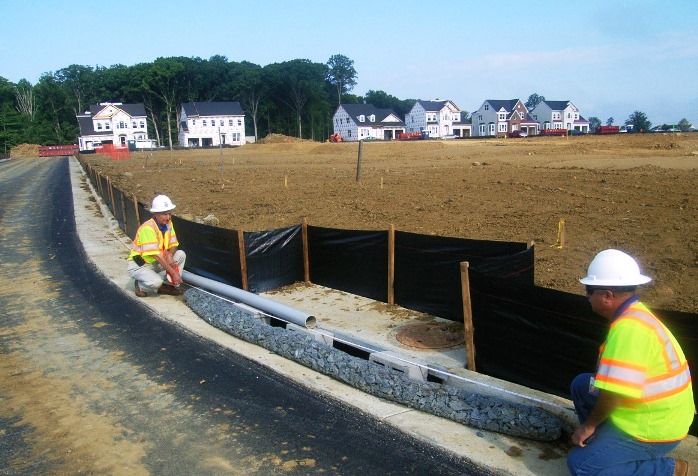Skip to content

Controlling erosion and sediment from land and site development projects safeguards local water quality and minimizes sediment and pollutants from entering our streams, the Potomac River, and, eventually, the Chesapeake Bay. It is also the law.
Failure to provide and/or implement an erosion and sediment control plan, or failing to maintain controls throughout the project, can add substantial costs to your project and harm the environment. County Inspectors regularly inspect construction sites and land development projects to ensure compliance with local, state and federal laws.
How to Prevent Erosion
Proper land development management can greatly control soil erosion and sedimentation. These management practices are required by local, state and federal law. Soil conservation requires an understanding of the following:
As a supervisor, you must ensure the controls are in place, maintained, and working properly throughout the project.
Erosion and Sediment Control

Controlling erosion and sediment from land and site development projects safeguards local water quality and minimizes sediment and pollutants from entering our streams, the Potomac River, and, eventually, the Chesapeake Bay. It is also the law.
Builders and developers can find information about plan review, inspections and fees, as well as useful tips at the site development page.
Failure to provide and/or implement an erosion and sediment control plan, or failing to maintain controls throughout the project, can add substantial costs to your project and harm the environment. County Inspectors regularly inspect construction sites and land development projects to ensure compliance with local, state and federal laws.
Keep in mind that work can be stopped for non-compliance with an approved plan, and there can be costs to repair damage to adjacent properties.
Uncontrolled erosion and sediment runoff from construction activities is one of the leading causes of sediment entering our waterways. Conditions at a construction site that create the potential for erosion and sediment runoff include: Large bare soil areas exposed to rain and wind, increased volumes of runoff that accelerate soil erosion and sediment, and changes in surface water patterns that may adversely affect drainage systems, slope stability, and survival of existing or new vegetation.
How to Prevent Erosion
Proper land development management can greatly control soil erosion and sedimentation. These management practices are required by local, state and federal law. Soil conservation requires an understanding of the following:
- Erosion control is the first line of defense. If soil is not allowed to erode -- there will be no sediment to control. Erosion control means protecting the bare soil surface from rainfall and runoff. You can protect soil by preserving existing vegetation, quickly establishing new vegetative cover, mulching, and immediately applying stone to areas that will be paved.
- Sediment control is the second line of defense. Most construction projects will create some land disturbance which leaves soil bare. To prevent soil from eroding and leaving the site, use measures such as diversion dikes, silt fences, sediment traps or sediment basins are required.
- Coordinate erosion and sediment control for maximum protection. Installing sediment trapping measures around a project is only one step to controlling this problem. Typical structural measures are only 50 to 75 percent effective at best, and this effectiveness is reduced as the sediment storage capacity is used up. Routine maintenance and inspections to clean the traps ensures their effectiveness. You can also install soil stabilization measures, such as temporary or permanent seeding upslope from the sediment traps. Both measures will increase their effectiveness and useful life while reducing the amount of soil lost from a site.
- Site Inspectors are available to consult with you on your particular project. Please call 703-792-7070 for assistance.

Establish Control from the Start
The project supervisor is required to establish erosion and sediment controls before land disturbance. These controls are required to protect property and water resources.
As a supervisor, you must ensure the controls are in place, maintained, and working properly throughout the project.
- Inspect erosion control measures regularly and within 48 hours of each rainfall. Any necessary repairs or cleanup must be made immediately.
- All sediment control practices must be constructed and maintained according to the minimum standards and specifications of the Virginia Erosion and Sediment Control Handbook.
- A copy of the approved erosion and sediment control plan must be maintained on the site at all times and available for inspection.
- During dewatering operations, water must be pumped into an approved filtering device.
- Additional erosion control measures must be installed as required by the Site Inspector.
- Road surfaces will be cleaned thoroughly at the end of the day. Sediment should be removed by sweeping/shoveling and properly disposed. The street may then be washed.
- It is the law -- Title 10.01, Chapter 5, Article 4 of the Code of Virginia.


Erosion and Sediment Control Plan
An Erosion and Sediment Control Plan (EC) is a final plan required for all land disturbing activities cumulatively exceeding 2,500 square feet, which would not otherwise necessitate submission of either a final subdivision or site plan. The following forms are required when submitting an erosion and sediment control plan:
- Final Site and Subdivision Plans and Revisions Checklist
- Final Plat Checklist
- Development Control Form
- Residential Site/Subdivision Fee Calculation Sheet or
- Nonresidential Site/Subdivision Fee Calculation Sheet
- Unit Price List (if applicable)
- Erosion & Sediment Control Plan Checklist (to be filled out by both the plan preparer and plan reviewer; a copy is to be kept with the project checklist)